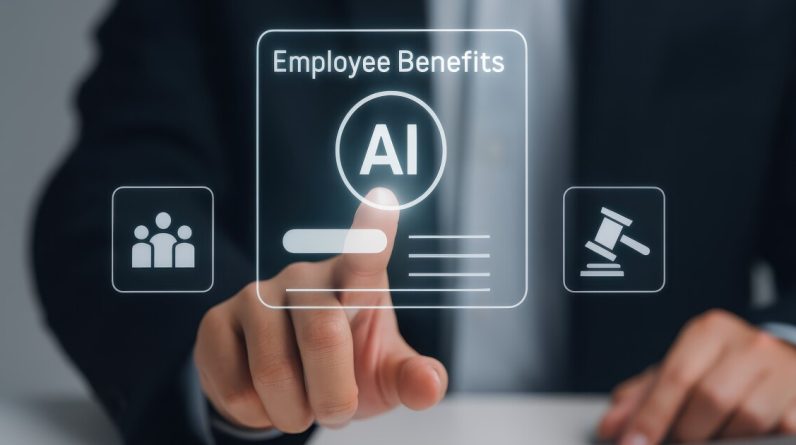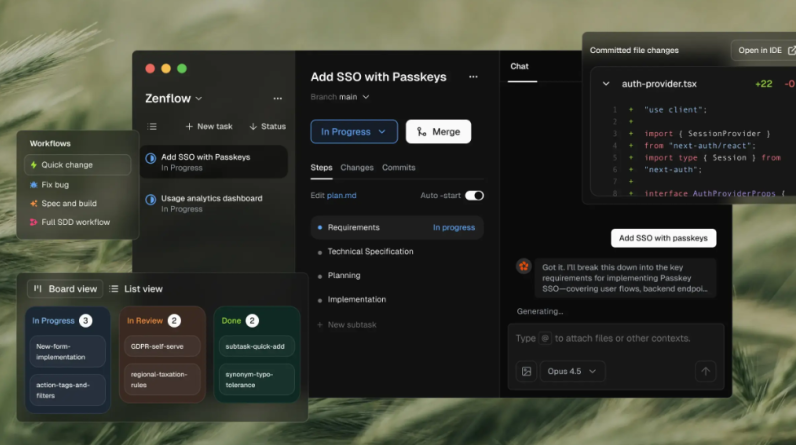
Breakneck changes like the advent of artificial intelligence (AI) may seem inevitable, but just a spoonful of common-sense advice can make them approachable and even attractive.
“This a very important moment. The world is changing fast, especially this past year with the accelerating emergence of robotics and AI, and the challenges of understanding and using them. But I’m still human, even though the line between robots and humans is blurring. So what’s our role?” asked Cyril Perducat, SVP and CTO at Rockwell Automation, in his keynote address this week at Automation Fair 2025 in Chicago.
“We still have to meet the same performance and production demands. We still have to produce the right products at the right place and right time. These demands plus AI and robotics are giving us opportunities to reinvent and transform ourselves, even though there’s a lot of technical background noise.”
To take advantage of these opportunities, Perducat reported that automation practitioners must focus and decide on which specific architecture, digitalized technologies and partners will be the most suitable for their processes and organizations. “Some technologies that were introduced five years ago are obsolete, while others are essential, so it’s important to make the right choices now, and work with the right partners,” explained Perducat. “You’ve got to chart your own course and find technologies that will be the most useful to you in the next five years.
“You must develop the best strategy for where you want to go next, but you must also resist getting pressured into just choosing what’s fancy,” Perducat continued. “These tools must also be grounded in reality. This requires users to embrace a transformation in how they design factories. They must move from production that simply rolls out products based on predetermined instructions, to equipment and facilities that can make independent decisions and learn to improve their own efficiency.”
Likewise, Perducat added that the recent emergence and adoption of autonomous mobile robots (AMR) should enable humans and robots to work safely and productively in the same spaces. For example, robots and other systems at Rockwell Automation’s facility in Singapore are already able to learn, adapt, improve and close the loop on more independent actions. “This isn’t just a patch,” said Perducat. “This is using AI to reinvent what we’ve been doing for decades, and it’s the future of industrial operations.”
SDA aids robotics and AI
Perducat reported there are three main ways to achieve this digitalized, AI-driven future with technologies that are already available today. They include software-defined automation (SDA), robotics and AI, especially as it’s applied to enabling automation and robotics. SDA is expected to reduce the friction between hardware and software, so users can develop and apply AI easily and in more useful ways, and maintain the grounding needed to reinvent industrial operations.
“SDA is already here, and it lets software function more independently of hardware, such as smart I/O and network components,” explained Perducat. “For example, our FactoryTalk Design Studio software can design an application using traditional hardware, but then SDA can simplify this process, reduce the friction usually associated with it by combining users with self-organizing and self-optimizing functions, and even allow users to employ and enjoy these tasks and capabilities. This is the next evolution of automation. This isn’t unfamiliar because we’re just reapplying what we already know. We’re simply maximizing flexibility and making applications more easily scalable and adaptive.”
Perducat cautioned that SDA doesn’t put hardware in any danger of disappearing or being commoditized. It merely shifts some computing functions to take multidisciplinary control to a new level that’s less constrained than before and lets users add customized functions including AI to meet the needs of their individual applications and architectures.
“AI is just one more new technology, like networking and computing way back when they were new,” added Perducat. “It can seem like every solution is trying to use AI is some way, which is why we’re being pragmatic. We’re engaging with our customers to co-innovate on making AI real, and incorporate functions that will be useful for them, such as working with Texas Instruments’ chilled water system to save energy.”
Perducat acknowledged that AI capabilities are showing up in everything from sensors to software. In fact, Rockwell Automation is adding Logix AI software to existing PLCs, so their users can upgrade existing devices with some self-optimization functions. These capabilities will also make it easier for machines and people to interact because users won’t have to spend as much time searching data and documentation for answers. They’ll instead receive immediate AI-generated recommendations that will let them be more efficient.
“They’re also going to gain agentic AI functions that will take them from knowing what to do to actually having it done for them,” added Perducat. “Different types of AI agents will run on plant floors, which will further enable machines and robots to perform autonomous tasks, operate more flexibly and safely, and be managed in fleets. AMRs and other robots will likewise serve as sensors and data collectors, monitoring risks and safety. We’re at the edge of intelligent, physical AI, and we can build it for real.”







